BPS District English Standards Book
ELA Strands
(RI) Reading Information
 Reading Informational/Nonfiction
Reading Informational/Nonfiction




 Reading Standards for Informational/Nonfiction
Reading Standards for Informational/Nonfiction
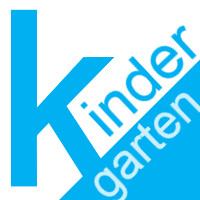 Kindergarten
Kindergarten
- ELA-00.RI.01 With prompting and support, ask and answer questions about key details in a text.
- ELA-00.RI.02 With prompting and support, identify the main topic and retell key details of a text.
- ELA-00.RI.03 With prompting and support, describe the connection between two individuals, events, ideas, or pieces of information in a text.
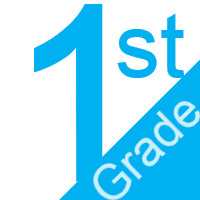 First Grade
First Grade
- ELA-01.RI.01 Ask and answer questions about key details in a text.
- ELA-01.RI.02 Identify the main topic and retell key details of a text.
- ELA-01.RI.03 Describe the connection between two individuals, events, ideas, or pieces of information in a text.
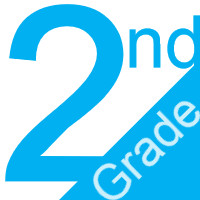 Second Grade
Second Grade
- ELA-02.RI.01 Ask and answer such questions as who, what, where, when, why, and how to demonstrate understanding of key details in a text.
- ELA-02.RI.02 Identify the main topic of a multiparagraph text as well as the focus of specific paragraphs within the text.
- ELA-02.RI.03 Describe the connection between a series of historical events, scientific ideas or concepts, or steps in technical procedures in a text.
 Kindergarten
Kindergarten
- ELA-00.RI.04 With prompting and support, ask and answer questions about unknown words in a text.
- ELA-00.RI.05 Identify the front cover, back cover, and title page of a book.
- ELA-00.RI.06 Name the author and illustrator of a text and define the role of each in presenting the ideas or information in a text.
 First Grade
First Grade
- ELA-01.RI.04 Ask and answer questions to help determine or clarify the meaning of words and phrases in a text.
- ELA-01.RI.05 Know and use various text features to locate key facts or information in a text.
- ELA-01.RI.06 Distinguish between information provided by pictures or other illustrations and information provided by the words in a text.
 Second Grade
Second Grade
- ELA-02.RI.04 Determine the meaning of words and phrases in a text relevant to a grade 2 topic or subject area.
- ELA-02.RI.05 Know and use various text features to locate key facts or information in a text efficiently.
- ELA-02.RI.06 Identify the main purpose of a text, including what the author wants to answer, explain, or describe.
 Kindergarten
Kindergarten
- ELA-00.RI.07 With prompting and support, describe the relationship between illustrations and the text in which they appear (e.g., what person, place, thing, or idea in the text an illustration depicts).
- ELA-00.RI.08 With prompting and support, identify the reasons an author gives to support points in a text.
- ELA-00.RI.09 With prompting and support, identify basic similarities in and differences between two texts on the same topic (e.g., in illustrations, descriptions, or procedures).
 First Grade
First Grade
- ELA-01.RI.07 Use the illustrations and details in a text to describe its key ideas.
- ELA-01.RI.08 Identify the reasons an author gives to support points in a text.
- ELA-01.RI.09 Identify basic similarities in and differences between two texts on the same topic (e.g., in illustrations, descriptions, or procedures).
 Second Grade
Second Grade
- ELA-02.RI.07 Explain how specific images (e.g., a diagram showing how a machine works) contribute to and clarify a text.
- ELA-02.RI.08 Describe how reasons support specific points the author makes in a text.
- ELA-02.RI.09 Compare and contrast the most important points presented by two texts on the same topic.
 Second Grade
Second Grade
- ELA-02.RI.10 By the end of year, read and comprehend informational texts, including history/social studies, science, and technical texts, in the grades 2-3 text complexity band proficiently, with scaffolding as needed at the high end of the range.
 Reading Standards for Informational/Nonfiction
Reading Standards for Informational/Nonfiction
 Third Grade
Third Grade
- ELA-03.RI.01 Ask and answer questions to demonstrate understanding of a text (textual evidence), referring explicitly to the text as the basis for the answers.
- ELA-03.RI.02 Determine the main idea of a text; recount the key details and explain how they support the main idea.
- ELA-03.RI.03 Describe the relationship between a series of historical events, scientific ideas or concepts, or steps in technical procedures in a text, using language that pertains to time, sequence, and cause/effect.
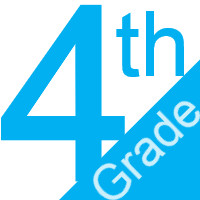 Fourth Grade
Fourth Grade
- ELA-04.RI.01 Refer to details and examples in a text (textual evidence) when explaining what the text says explicitly and when drawing inferences from the text. Summarize the text.
- ELA-04.RI.02 Determine the main idea of a text and explain how it is supported by key details.
- ELA-04.RI.03 Explain events, procedures, ideas, or concepts in a historical, scientific, or technical text, including what happened and why, based on specific information in the text.
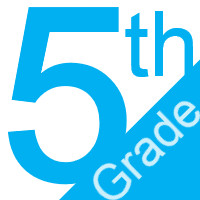 Fifth Grade
Fifth Grade
- ELA-05.RI.01 Quote accurately from a text when explaining what the text says explicitly and when drawing inferences from the text. Summarize the text.
- ELA-05.RI.02 Determine two or more main ideas of a text and explain how they are supported by key details; summarize the text.
- ELA-05.RI.03 Explain the relationships or interactions between two or more individuals, events, ideas, or concepts in a historical, scientific, or technical text based on specific information in the text.
 Third Grade
Third Grade
- ELA-03.RI.04 Determine the meaning of general academic and domain-specific words and phrases in a text relevant to a grade 3 topic or subject area.
- ELA-03.RI.05 Use text features and search tools to locate information relevant to a given topic efficiently.
- ELA-03.RI.06 Distinguish their own point of view from that of the author of a text.
 Fourth Grade
Fourth Grade
- ELA-04.RI.04 Determine the meaning of general academic and domain-specific words or phrases in a text relevant to a grade 4 topic or subject area.
- ELA-04.RI.05 Describe the overall structure of events, ideas, concepts, or information in a text or part of a text.
- ELA-04.RI.06 Compare and contrast a firsthand and secondhand account of the same event or topic; describe the differences in focus and the information provided.
 Fifth Grade
Fifth Grade
- ELA-05.RI.04 Determine the meaning of general academic and domain-specific words and phrases in a text relevant to a grade 5 topic or subject area.
- ELA-05.RI.05 Compare and contrast the overall structure of events, ideas, concepts, or information in two or more texts.
- ELA-05.RI.06 Analyze multiple accounts of the same event or topic, noting important similarities and differences in the point of view they represent.
 Third Grade
Third Grade
- ELA-03.RI.07 Use information gained from illustrations (e.g., maps, photographs) and the words in a text to demonstrate understanding of the text (e.g., where, when, why, and how key events occur).
- ELA-03.RI.08 Describe the logical connection between particular sentences and paragraphs in a text (e.g., comparison, cause/effect, first/second/third in a sequence).
- ELA-03.RI.09 Compare and contrast the most important points and key details presented in two texts on the same topic.
 Fourth Grade
Fourth Grade
- ELA-04.RI.07 Interpret information presented visually, orally, or quantitatively (e.g., in charts, graphs, diagrams, time lines, animations, or interactive elements on Web pages) and explain how the information contributes to an understanding of the text in which it appears.
- ELA-04.RI.08 Explain how an author uses reasons and evidence to support particular points in a text.
- ELA-04.RI.09 Integrate information from two texts on the same topic in order to write or speak about the subject knowledgeably.
 Fifth Grade
Fifth Grade
- ELA-05.RI.07 Draw on information from multiple print or digital sources, demonstrating the ability to locate an answer to a question quickly or to solve a problem efficiently.
- ELA-05.RI.08 Explain how an author uses reasons and evidence to support particular points in a text, identifying which reasons and evidence supports which point(s).
- ELA-05.RI.09 Integrate information from several texts on the same topic in order to write or speak about the subject knowledgeably.
 Third Grade
Third Grade
- ELA-03.RI.10 By the end of the year, read and comprehend informational texts, including history/social studies, science, and technical texts, at the high end of the grades 2-3 text complexity band independently and proficiently.
 Fourth Grade
Fourth Grade
- ELA-04.RI.10 By the end of year, read and comprehend informational texts, including history/social studies, science, and technical texts, in the grades 4-5 text complexity band proficiently, with scaffolding as needed at the high end of the range.
 Fifth Grade
Fifth Grade
- ELA-05.RI.10 By the end of the year, read and comprehend informational texts, including history/social studies, science, and technical texts, at the high end of the grades 4-5 text complexity band independently and proficiently.
 Reading Standards for Informational/Nonfiction
Reading Standards for Informational/Nonfiction
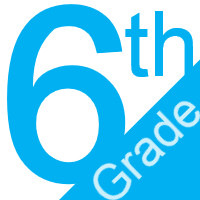 Sixth Grade
Sixth Grade
- ELA-06.RI.01 Read closely to comprehend Informational/Nonfiction text.
- ELA-06.RI.01.a Cite textual evidence to support analysis of what the text says explicitly.
- ELA-06.RI.01.b Cite textual evidence to support inferences drawn from the text.
- ELA-06.RI.01.c Provide an objective (excluding personal opinions or judgments) summary of the text.
- ELA-06.RI.02 Determine a central idea of a text and explain how it is conveyed through particular details.
- ELA-06.RI.03 Analyze in detail how a key individual, event, or idea is introduced, illustrated, and elaborated in a text.
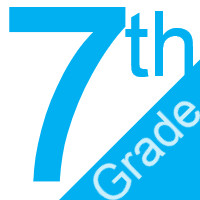 Seventh Grade
Seventh Grade
- ELA-07.RI.01 Read closely to comprehend Informational/Nonfiction text.
- ELA-07.RI.01.a Cite several pieces of textual evidence to support analysis of what the text says explicitly.
- ELA-07.RI.01.b Cite several pieces of textual evidence to support inferences drawn from the text.
- ELA-07.RI.01.c Provide an objective summary of the text.
- ELA-07.RI.02 Determine two or more central ideas in a text and analyze their development over the course of the text.
- ELA-07.RI.03 Analyze the interactions between individuals, events, and ideas in a text
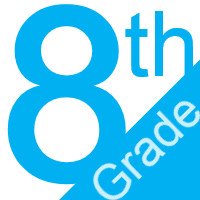 Eighth Grade
Eighth Grade
- ELA-08.RI.01 Read closely to comprehend Informational/Nonfiction text.
- ELA-08.RI.01.a Cite the textual evidence that most strongly supports an analysis of what the text says explicitly.
- ELA-08.RI.01.b Cite the textual evidence that most strongly supports inferences drawn from the text.
- ELA-08.RI.01.c Provide an objective summary of the text.
- ELA-08.RI.02 Determine a central idea of a text and analyze its development over the course of the text, including its relationship to supporting ideas.
- ELA-08.RI.03 Analyze how a text makes connections among and distinctions between individuals, ideas, or events.
 Sixth Grade
Sixth Grade
- ELA-06.RI.04 Determine the meaning of words and phrases as they are used in a text, including figurative, connotative, and technical meanings.
- ELA-06.RI.05 Describe how a paragraph, chapter, or section fits into the overall structure of a text and contributes to the development of the ideas.
- ELA-06.RI.06 Determine an author’s point of view or purpose in a text and explain how it is conveyed in the text.
 Seventh Grade
Seventh Grade
- ELA-07.RI.04 Determine the meaning of words and phrases as they are used in a text, including figurative, connotative, and technical meanings; analyze the impact of a specific word choice on meaning and tone.
- ELA-07.RI.05 Analyze the structure an author uses to organize a text, including how the major sections contribute to the whole and to the development of the ideas.
- ELA-07.RI.06 Determine an author’s point of view or purpose in a text and analyze how the author distinguishes his or her position from that of others.
 Eighth Grade
Eighth Grade
- ELA-08.RI.04 Determine the meaning of words and phrases as they are used in a text, including figurative, connotative, and technical meanings; analyze the impact of specific word choices on meaning and tone, including analogies or allusions to other texts.
- ELA-08.RI.05 Analyze the structure an author uses to organize a text, including how sections, paragraphs, and/or particular sentences contribute to the whole and to the development of the ideas.
- ELA-08.RI.06 Determine an author’s point of view or purpose in a text and analyze how the author acknowledges and responds to conflicting evidence or viewpoints.
 Sixth Grade
Sixth Grade
- ELA-06.RI.07 Integrate information presented in different media or formats as well as in written text to develop a coherent understanding of a topic or issue.
- ELA-06.RI.08 Trace and evaluate the argument and specific claims in a text, distinguishing claims that are supported by reasons and evidence from claims that are not.
- ELA-06.RI.09 Compare and contrast one author’s presentation of events with that of another.
 Seventh Grade
Seventh Grade
- ELA-07.RI.07 Compare and contrast a text to an audio, video, or multimedia version of the text, analyzing each medium’s portrayal of the subject.
- ELA-07.RI.08 Trace and evaluate the argument and specific claims in a text, assessing whether the reasoning is sound and the evidence is relevant and sufficient to support the claims.
- ELA-07.RI.09 Analyze how two or more authors writing about the same topic shape their presentations of key information by emphasizing different evidence or advancing different interpretations of facts.
 Eighth Grade
Eighth Grade
- ELA-08.RI.07 Evaluate the advantages and disadvantages of using different mediums to present a particular topic or idea.
- ELA-08.RI.08 Trace and evaluate the argument and specific claims in a text, assessing whether the reasoning is sound and the evidence is relevant and sufficient; recognize when irrelevant evidence is introduced.
- ELA-08.RI.09 Analyze a case in which two or more texts provide conflicting information on the same topic and identify where the texts disagree on matters of fact or interpretation.
 Sixth Grade
Sixth Grade
- ELA-06.RI.10 By the end of grade 6, read and comprehend grade-level appropriate literature, in a variety of print genres and other media, proficiently and independently, with scaffolding as needed.
 Seventh Grade
Seventh Grade
- ELA-07.RI.10 By the end of grade 7, read and comprehend grade-level appropriate literature, in a variety of print genres and other media, proficiently and independently, with scaffolding as needed.
 Eighth Grade
Eighth Grade
- ELA-08.RI.10 By the end of grade 8, read and comprehend grade-level appropriate literature, in a variety of print genres and other media, proficiently and independently, with scaffolding as needed.
 Reading Standards for Informational/Nonfiction
Reading Standards for Informational/Nonfiction
- ELA-09.RI.01 | ELA-10.RI.01
Cite strong and thorough textual evidence to support analysis of what the text says explicitly as well as inferences drawn from the text.
- ELA-09.RI.02 | ELA-10.RI.02
Determine a central idea of a text and analyze its development over the course of the text, including how it emerges and is shaped and refined by specific details; provide an objective summary of the text.
- ELA-09.RI.03 | ELA-10.RI.03
Analyze how the author unfolds an analysis or series of ideas or events, including the order in which the points are made, how they are introduced and developed, and the connections that are drawn between them.
- ELA-11.RI.01 | ELA-12.RI.01
Cite strong and thorough textual evidence to support analysis of what the text says explicitly as well as inferences drawn from the text, including determining where the text leaves matters uncertain.
- ELA-11.RI.02 | ELA-12.RI.02
Determine two or more central ideas of a text and analyze their development over the course of the text, including how they interact and build on one another to provide a complex analysis; provide an objective summary of the text.
- ELA-11.RI.03 | ELA-12.RI.03
Analyze a complex set of ideas or sequence of events and explain how specific individuals, ideas, or events interact and develop over the course of the text.
- ELA-09.RI.04 | ELA-10.RI.04
Determine the meaning of words and phrases as they are used in a text, including figurative, connotative, and technical meanings; analyze the cumulative impact of specific word choices on meaning and tone (e.g., how the language of a court opinion differs from that of a newspaper).
- ELA-09.RI.05 | ELA-10.RI.05
Analyze in detail how an author's ideas or claims are developed and refined by particular sentences, paragraphs, or larger portions of a text (e.g., a section or chapter).
- ELA-09.RI.06 | ELA-10.RI.06
Determine an author's point of view or purpose in a text and analyze how an author uses rhetoric to advance that point of view or purpose.
- ELA-11.RI.04 | ELA-12.RI.04
Determine the meaning of words and phrases as they are used in a text, including figurative, connotative, and technical meanings; analyze how an author uses and refines the meaning of a key term or terms over the course of a text (e.g., how Madison defines faction in Federalist No. 10).
- ELA-11.RI.05 | ELA-12.RI.05
Analyze and evaluate the effectiveness of the structure an author uses in his or her exposition or argument, including whether the structure makes points clear, convincing, and engaging.
- ELA-11.RI.06 | ELA-12.RI.06
Determine an author's point of view or purpose in a text in which the rhetoric is particularly effective, analyzing how style and content contribute to the power, persuasiveness, or beauty of the text.
- ELA-09.RI.07 | ELA-10.RI.07
Analyze various accounts of a subject told in different mediums, determining which details are emphasized in each account.
- ELA-09.RI.08 | ELA-10.RI.08
Delineate and evaluate the argument and specific claims in a text, assessing whether the reasoning is valid and the evidence is relevant and sufficient; identify false statements and fallacious reasoning.
- ELA-09.RI.09 | ELA-10.RI.09
Analyze seminal U.S. documents of historical and literary significance, including how they address related themes and concepts.
- ELA-11.RI.07 | ELA-12.RI.07
Integrate and evaluate multiple sources of information presented in different media or formats (e.g., visually, quantitatively) as well as in words in order to address a question or solve a problem.
- ELA-11.RI.08 | ELA-12.RI.08
Delineate and evaluate the reasoning in seminal U.S. texts, including the application of constitutional principles and use of legal reasoning (e.g., in U.S. Supreme Court majority opinions and dissents) and the premises, purposes, and arguments in works of public advocacy (e.g., The Federalist, presidential addresses).
- ELA-11.RI.09 | ELA-12.RI.09
Analyze seventeenth-, eighteenth-, and nineteenth-century foundational U.S. documents of historical and literary significance (including The Declaration of Independence, the Preamble to the Constitution, the Bill of Rights, and Lincoln's Second Inaugural Address) for their themes, purposes, and rhetorical features.
- ELA-09.RI.10 | ELA-10.RI.10
By the end of grade 9, read and comprehend literary nonfiction in the grades 9-10 text complexity band proficiently, with scaffolding as needed at the high end of the range. By the end of grade 10, read and comprehend literary nonfiction at the high end of the grades 9-10 text complexity band independently and proficiently
- ELA-11.RI.10 | ELA-12.RI.10
By the end of grade 11, read and comprehend literary nonfiction in the grades 11-CCR text complexity band proficiently, with scaffolding as needed at the high end of the range.
 Reading Standards for Informational/Nonfiction
Reading Standards for Informational/Nonfiction Reading Standards for Informational/Nonfiction
Reading Standards for Informational/Nonfiction Reading Standards for Informational/Nonfiction
Reading Standards for Informational/Nonfiction Reading Standards for Informational/Nonfiction
Reading Standards for Informational/Nonfiction
 Reading Informational/Nonfiction
Reading Informational/Nonfiction